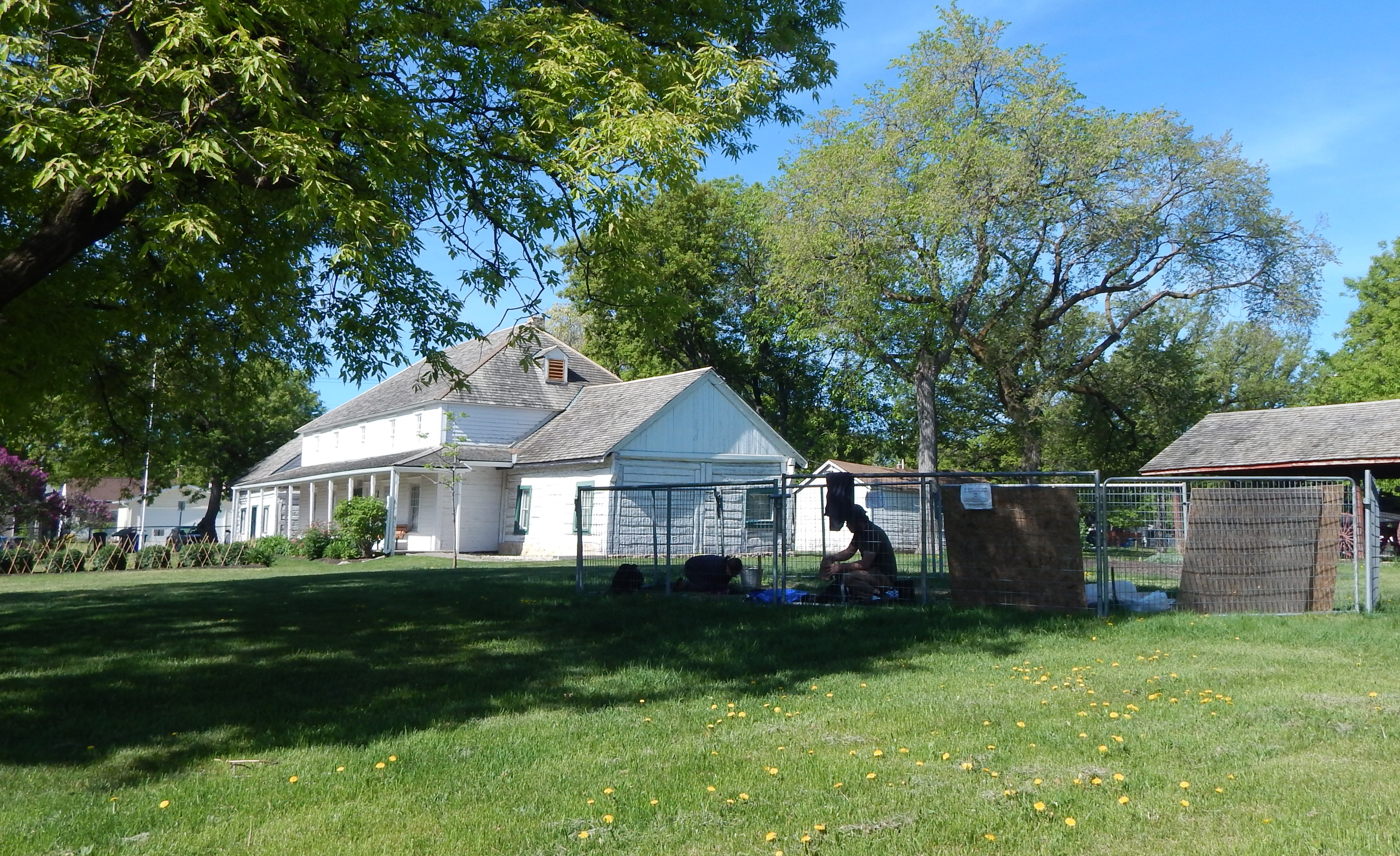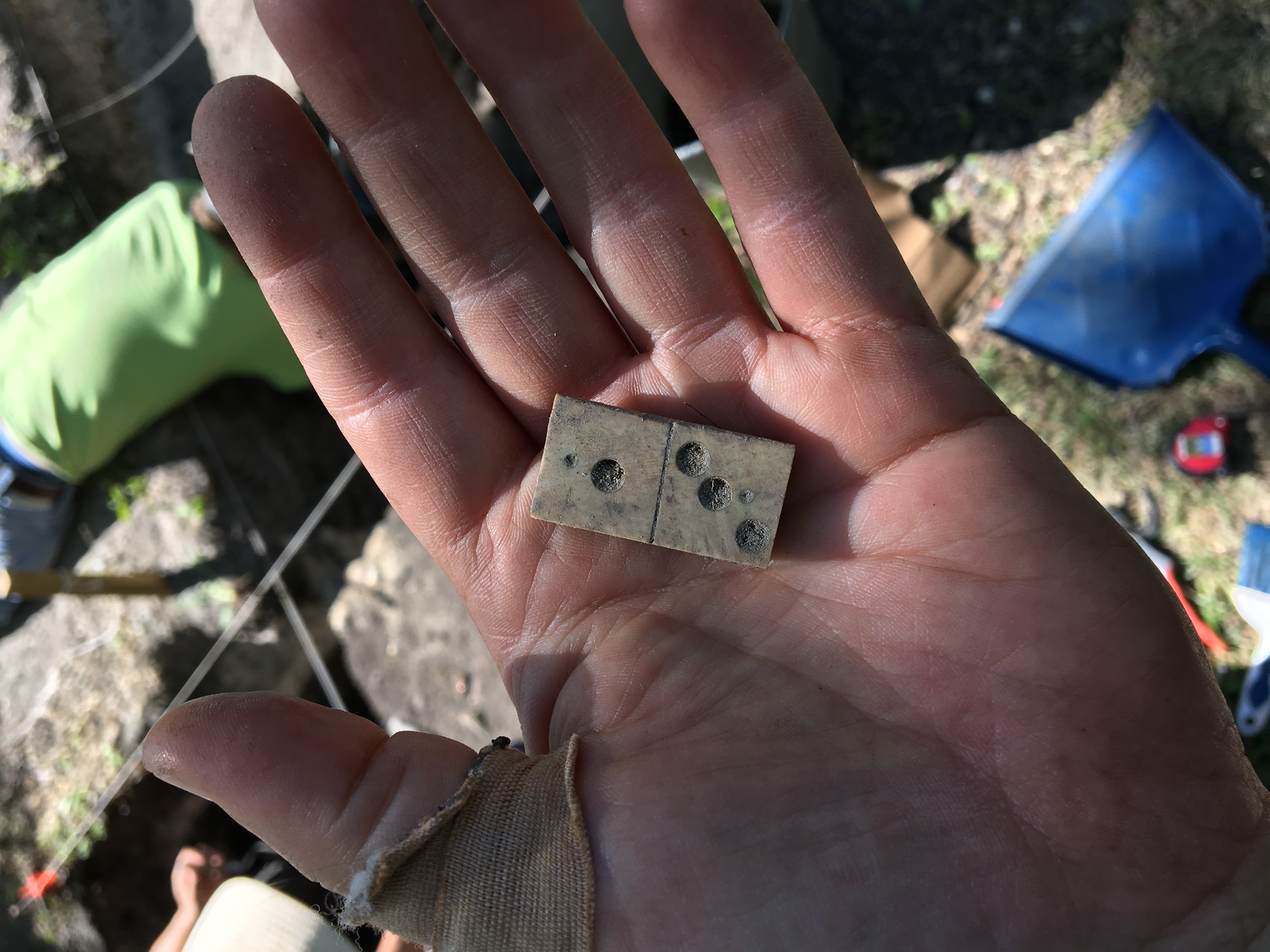Seven Oaks House
| During the summers of 2018 and 2019, Seven Oaks House Museum hosted the University of Manitoba Department of Anthropology’s undergraduate archeological field school. Students who took the field school gained hands-on experience recovering and analyzing archaeological materials by excavating on the Museum’s grounds and reporting on their findings. Seven Oaks House is a two-storey Georgian home built by John and Mary Inkster in 1853 to house their growing family. Like many families in the Red River Settlement, the Inksters had strong ties to the fur trade and the Hudson’s Bay Company (HBC). Mary Inkster (née Sinclair) was the daughter of a prominent HBC administrator and his Cree-Métis wife, Nahoway. John Inkster originally sailed to York Factory from the Orkney Islands as an HBC stonemason. |
Excavations at Seven Oaks House, 2019 |
|
A bone and wood domino found during the 2019 Field School at Seven Oaks House |
The land on which Seven Oaks Houses sits has a human history that stretches back for millennia. A cross section of this rich past is preserved under the gardens and trees that cover the site today. The level of archaeological preservation seen at Seven Oaks House is unusual for an urban site – the most recent archaeological finds at the site date to the early 20th century, while the oldest date back hundreds (possibly thousands) of years. This phenomenal archaeological preservation is actually part of the Inkster family’s legacy. When John Inkster passed away in 1874, he left Seven Oaks House and its remaining grounds to his daughter, Mary ‘Marak’ Inkster, so long as she remained unmarried. When she died in 1912, Marak left the house and grounds to the growing City of Winnipeg, with the condition that the grounds remain a public park. This stipulation in Marak’s will has kept the site from being heavily developed, providing us with a tangible link to Winnipeg’s deep history. |






